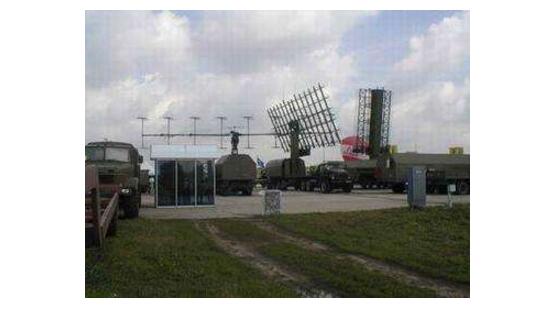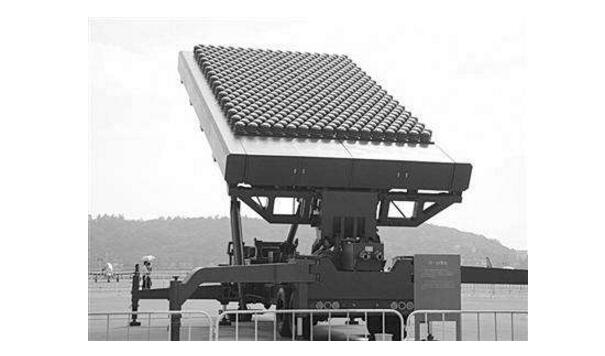In modern warfare conditions, in order for the air defense forces of the Army to effectively master the airborne situational awareness information, the detection radar must have the following properties:
First, it can detect various types of air targets, such as manned aircraft, drones, missiles, cruise missiles, high-precision weapons, and so on;
Second, the detection distance is far enough;
Thirdly, the detection altitude covers all airspaces, including ultra-low altitude, low altitude, hollow, high altitude, etc. Fourthly, the measurement accuracy is high, and the coordinates and flight trajectory of air targets can be accurately determined.
Fifth, radar data transmission speed is fast and transmission performance is stable;
Sixth, with strong anti-interference ability, it can deal with active interference and passive interference.
Seventh, it has certain anti-strike ability and can effectively respond to the "point-of-hole" attack of high-precision weapons.
For the Army Air Defense Forces, in order to significantly improve the survivability of land-based detection radars, it is necessary to make radars capable of responding to high-precision weapons. To achieve this, the best way is to enhance land-based detection radars. The maneuvering capability is to reduce the number of radars on the probing radar and shorten the time for deploying and withdrawing the radar.
Compared with high-frequency radars, Mibo radar has more difficulties in improving its maneuverability, but Mibo radar has some advantages that other high-frequency radars do not have, such as: wide detection range; strong detection performance Effectively enhance the radar reflection cross-section of aerial targets, which is especially effective for small air targets and invisible aerial targets. Since the antenna pattern is not greatly affected by the secondary radiation (especially in the radial direction of the radiation), the air target is received. The reflection signal fluctuations are very small; the impact of hydro-meteorological conditions on the meter radar is almost non-existent, which greatly reduces the dependence of the meter radar on the weather conditions; the detection dead angle is reduced, and the detection capability in lush vegetation areas is significantly enhanced. Wait. In addition, anti-radar weapons, jamming equipment, and invisible technologies have met with many difficulties in the R&D process and have made slow progress. This objectively determines that Mipra radar has broad application space and development prospects in air defense and civil aviation. Distance is far away, the measurement accuracy is high, the stability of target tracking is strong, and the task of air state situation awareness can be completed in high quality under complex climatic conditions. It is an efficient defense weapon in the national security field.

The Stealth fighter mainly reduces the radar's detectability through the appearance of stealth design and absorbing coating. However, as far as all stealth fighter planes are concerned, the so-called “full stealth†capabilities of all-round and all-electromagnetic bands are still not realized. Especially when fighter planes perform missions, mounted missiles or external fuel tanks do not possess stealth performance, and they greatly increase. The possibility of a fighter being detected by the radar. And even without the plug-in, stealth fighter can only achieve the stealth of the microwave radar in the front and the abdomen. The stealth electromagnetic wave band is mostly in the range of 0.3~29 GHz, and the meter wave radar just avoids the stealth band of the stealth fighter. The reason why stealth fighters can be detected.
It is because Mibo Radar “naturally†possesses the “expertise†of discovering stealth fighter planes. Its detection range is far away, its volume and weight are not large, and it is affected by weather conditions with low electronic antagonism and is suitable for being placed on the ground. Mobile deployments on sea-based and space-based platforms have led many military professionals to believe that, in contrast, Mibo Radar has a better overall advantage and should shoulder the heavy responsibility of anti-stealth fighters. However, the traditional Mipo radar uses a simple Yagi antenna or an old mesh antenna. The disadvantages are poor resolution, low detection accuracy, inability to measure height, and limited target recognition capability, and it is difficult to eliminate the effects of ground reflections. The low-altitude detection capability is weak, the coverage airspace is not continuous, the anti-interference ability is insufficient, and the position is poorly adaptable. These problems are also an important reason for the stagnation of Mibo Radar's development. They also determined that Mipra radar’s “vision†does not increase if it is not improved. It can only focus on air defense warnings and cannot be used for weapon guidance. It is impossible to provide high-quality tracking of stealth fighters and it is difficult to become the core radar in the current anti-stealth fighters.

In order to solve the problem of Mipra radar's difficulty in achieving target tracking and identification, Wu Jianqi combined meter radar and phased array radar design methods to create a phased array meter-wave radar. Using electric sweep instead of machine sweep, meter wave radar can generate Electromagnetic signals with specific waveforms, frequencies, and polarization characteristics are identified in the radar receiver using a more advanced identification algorithm to reflect the reflected signals, thereby achieving point-to-point correlation and target recognition in the air. As can be seen from the photos of the YLC-8B at the Paris Airshow, the radar is indeed a phased array design system with approximately 1,000 T/R components.
Independent beam implementation scans:Wu Jianqi's team used the fact that phased array radars can transmit different types of beams at the same time, and perform scanning in different terrain directions to transmit separate beams with different characteristics. These beams are independent, completely different in frequency and waveform, and have a narrow beamwidth. When multiple beams respectively scan different airspaces, they make up for the beam notches formed by the lobe classification.
In addition, the multi-path reflection signal returns to the radar antenna, and there is a high probability that it will not be returned to the beam that transmitted it, and can be identified, which greatly reduces the interference of the multi-path signal. Assume that there are 10 beam signals, the numbers are 1 and 10 respectively, and the characteristics of each beam signal can be identified and are responsible for different airspaces. After the 1st beam signal is reflected by the ground, it only has a 10% probability to enter the 1st beam. Radar entrance, 90% can be identified.
Put forward terrain parameter matching maximum likelihood altimetry algorithm:It is more complicated to solve the problem of height measurement than to solve the problem of discontinuity in the power area. This is because the target's solution for altitude measurement is completely different at high altitude and low altitude. In high altitude, the solution can use the discontinuity method in the power area. At low altitude, due to the complex terrain, multi-path signals and reflected signals are intertwined, and large clutters are often generated. Multiple independent beam scanning methods can improve certain high-performance measurement but cannot achieve an ideal state.
In order to solve this problem, Wu Jianqi team proposed a maximum likelihood altimetry algorithm called terrain parameter matching. The essence of this algorithm is to accurately model the radar positions. Since radars are generally deployed on selected fixed positions, wartime maneuvers are nothing more than to switch back and forth between these positions, so there are several Position pre-modeling conditions. Through the accurate measurement of the surrounding environment of radar arrays, the fluctuation information of each reflection point of the meter radar under the surrounding terrain is obtained, and these information are then calculated as path difference and multipath factor. The radar is placed on the position for actual use, and the actually used height measurement result is compared with the theoretical value to correct the path difference and multipath factor. Through multiple corrections, these parameters can automatically correct the detection result and will be correct. Target altitude information is returned to the radar display.
This method works very well when used on more platform positions. However, the effect is weaker when used in complex terrain with large undulations. For this reason, Wu Jianqi's team has proposed a method of altimetry based on adaptive beamforming. This method is to design an active cancellation radar beam. The target direct echo and reflection multipath echo are regarded as side lobe interference in two position directions. In radar height measurement, active cancellation radar beams are used. The two beams perform cancellation, and the best direction of cancellation is the actual arrival angle of the echo signal and multipath signal. From this angle, the true height of the target can be calculated.
Two ways to solve the anti-jamming capability are proposed:The first is to use electromagnetic spectrum control as much as possible in the operational environment, while keeping the radar operating frequency away from the main military communications and civilian radio frequency bands so as not to cause interference. In practice, it has been found that the use of the traditional high-frequency band (HF) of 30 to 300 MHz in the meter wave radar is often difficult to meet the anti-jamming requirements, and if the frequency band is slightly lowered, it is designed to be around 300 MHz between the high-frequency HF band and the VHF UHF. , it can not only avoid the majority of interference, but also improve the radar detection accuracy, refresh frequency and frequency conversion space, but it has no obvious impact on the ability of radar to detect stealth aircraft. Therefore, the wavelength of the advanced meter radar is strictly speaking between the meter wave and the decimeter wave.
The second is to implement signal processing in a multi-domain anti-interference manner. Multi-domain approaches include airspace, waveform domains, energy domains, and processing domains. In the airspace, Advanced Meter Wave Radar has built-in an interference directional tracking module, and when it finds interference, it accurately solves its incoming attack angle, and actively transmits a cancellation beam in this direction to shield the interference. In the waveform domain, Advanced Metering Radar uses thousands of waveform combinations to emit different combinations of waveforms at specific times through a certain function. It is difficult to accurately simulate enemy interference. In the energy domain, pulse compression technology and long-term pulse energy accumulation are used to implement power confrontation, and efforts are made to achieve “burn-through†interference. In the processing domain, the use of amplitude deviation coefficient rejection, spectral feature analysis and other methods to use the elimination of interference.
A manual pulse generator (MPG) is a device normally associated with computer numerically controlled machinery or other devices involved in positioning. It usually consists of a rotating knob that generates electrical pulses that are sent to an equipment controller. The controller will then move the piece of equipment a predetermined distance for each pulse.
The CNC handheld controller MPG Pendant with x1, x10, x100 selectable. It is equipped with our popular machined MPG unit, 4,5,6 axis and scale selector, emergency stop and reset button.
Manual Pulse Generator,Handwheel MPG CNC,Electric Pulse Generator,Signal Pulse Generator
Jilin Lander Intelligent Technology Co., Ltd , https://www.jllandertech.com